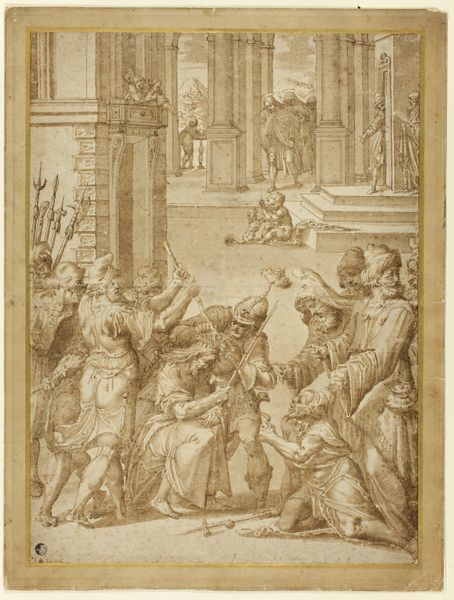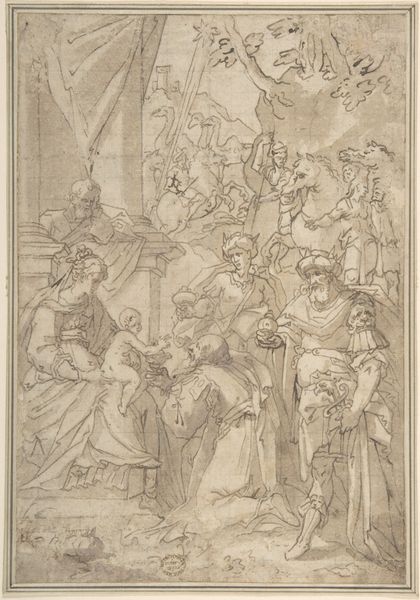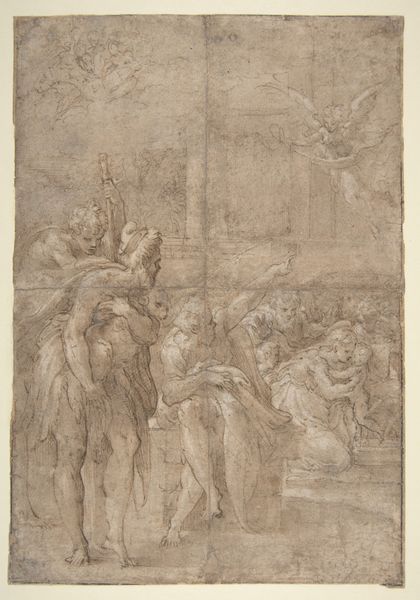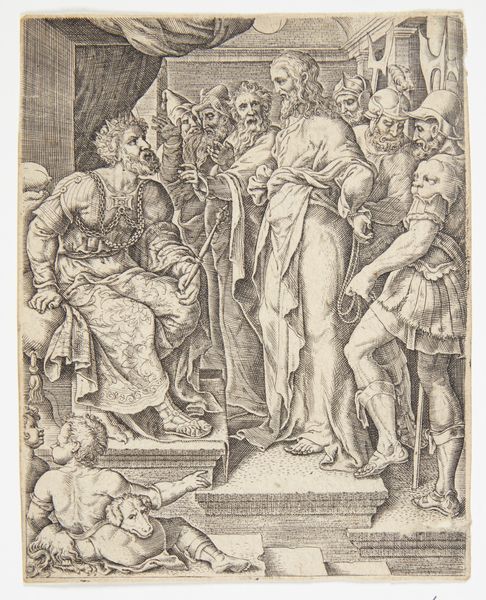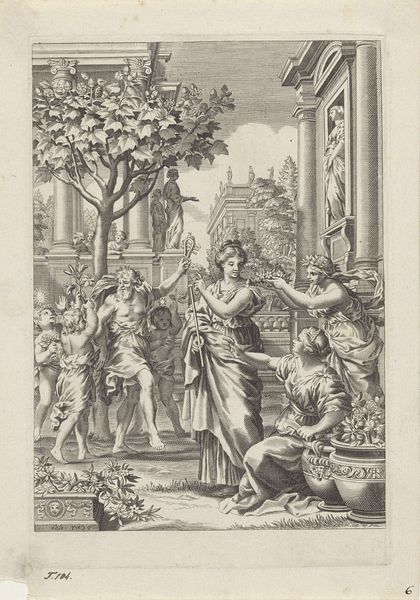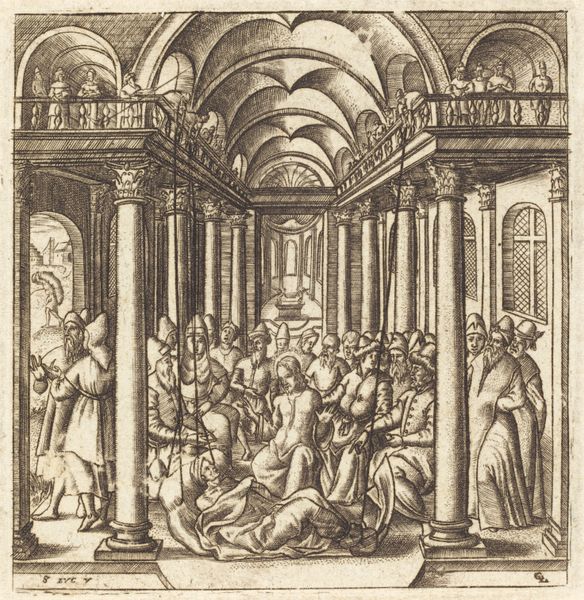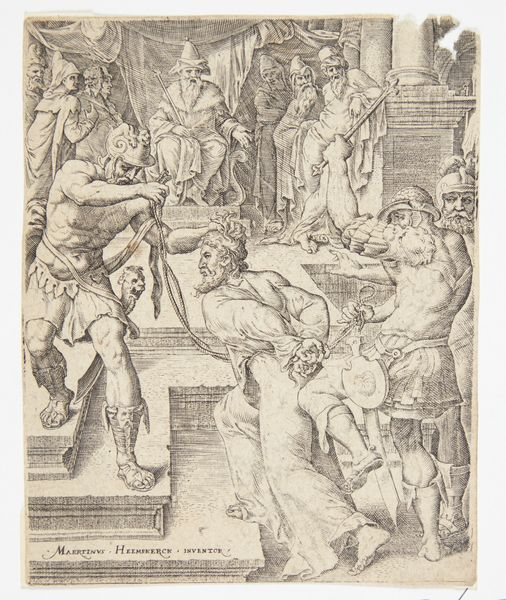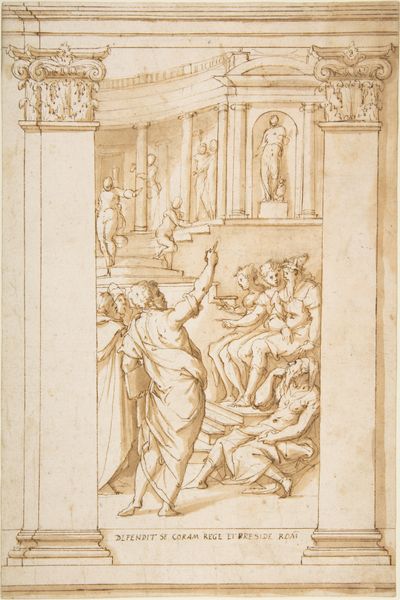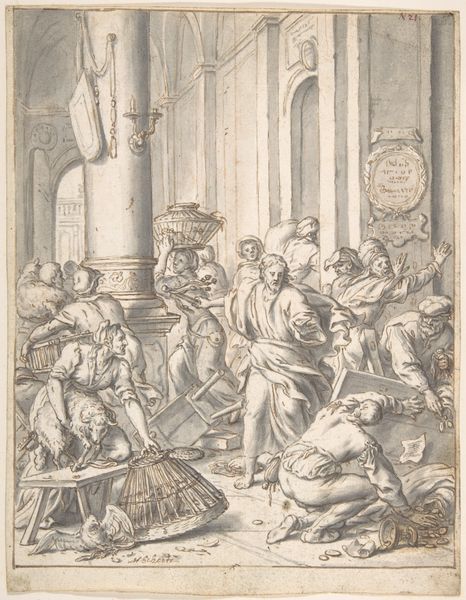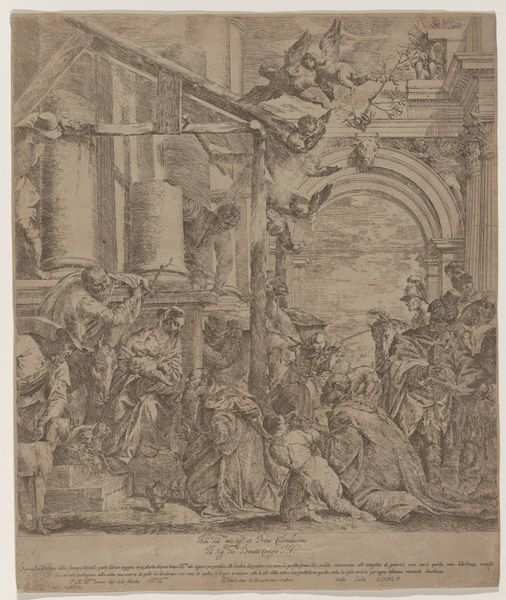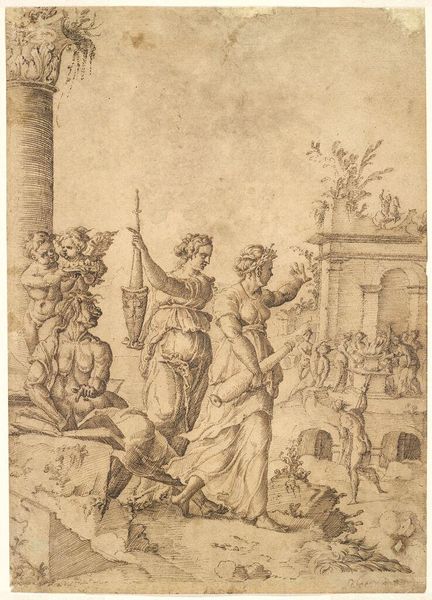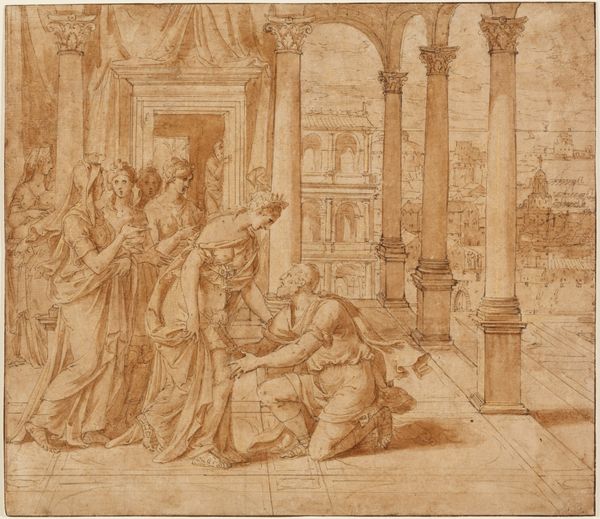
The Triumph of Nature Over Art (design for an engraving of 'De Florum Cultura') 1628 - 1638
0:00
0:00
drawing, print, engraving
#
drawing
#
baroque
# print
#
landscape
#
figuration
#
line
#
history-painting
#
italian-renaissance
#
engraving
Dimensions: 7 13/16 x 5 11/16in. (19.9 x 14.5cm)
Copyright: Public Domain
Editor: Here we have Pietro da Cortona's "The Triumph of Nature Over Art," a drawing from the 1630s, preparatory for an engraving. It's really quite intricate, full of figures in what looks like a classical garden. I'm struck by the tension between the artificial architecture and the burgeoning nature around it. What do you see in this piece? Curator: I see a powerful statement on the materials of artistic production within a changing economic and social landscape. This drawing, made for an engraving, highlights the artist's reliance on reproducible media. The theme itself – Nature’s triumph – questions the very labor involved in creating art. Editor: How so? Curator: Consider the context. This is the Baroque era, with a flourishing merchant class. The abundance depicted, all those flowers, it's related to global trade networks. The engraving would circulate this image widely, almost commodifying this idyllic scene. Art is both reflecting and participating in systems of labor. Look at the material value ascribed to an original drawing versus a printed reproduction, how is that value determined? Editor: I hadn’t considered the implications of it being a design *for* an engraving. It’s like the drawing’s inherent value is less than the eventual prints. It is interesting to look at the material cost. Curator: Precisely! The contrast underscores a shifting definition of artistic worth tied not only to skill, but to methods of distribution. Do you think that, even then, they worried that this wider circulation could diminish the drawing’s power as an art object? Editor: Absolutely. It adds another layer to that triumph of nature over *art*, maybe as art and its structures were transforming within society.
Comments
No comments
Be the first to comment and join the conversation on the ultimate creative platform.
